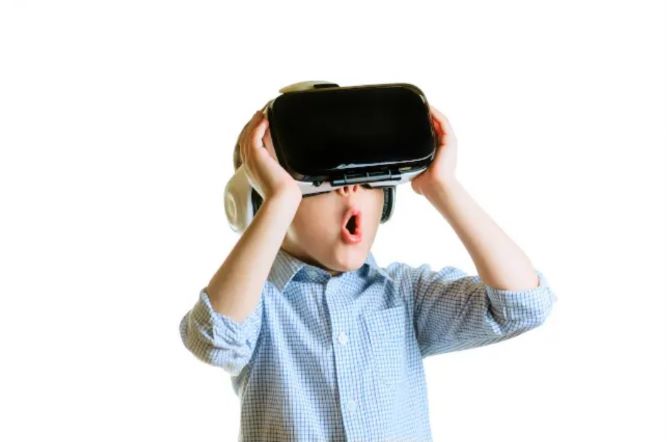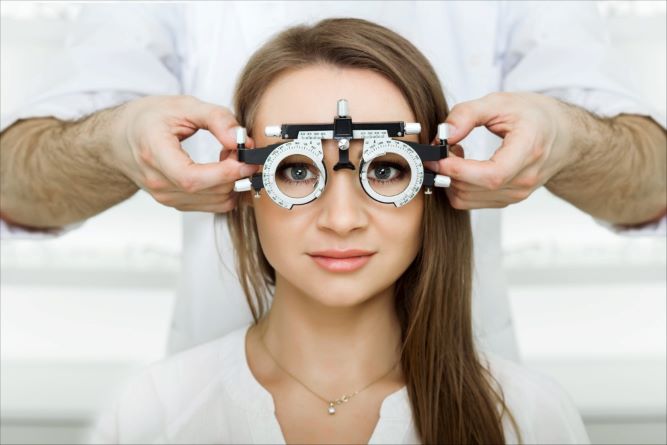Are Virtual Reality Glasses Really Dangerous?
Aside From The Memorable And Exceptional Experience Of Virtual Headsets, Many Gamers And Parents Are Concerned About Their Own Health And That Of Their Children.
These people are looking for the answer to whether virtual reality glasses are harmful to the user’s eye?
If you are one of these people, read the rest of this article to get acquainted with the dangers and possible harms of using virtual reality glasses for the eyes and body health.
You’ve probably heard that watching TV at close range hurts your eyes. But how effective it is to use VR headsets with a high-resolution display just a few millimeters from your retina.
Before reading, it is better to get acquainted with the mechanism and effects of using this hardware on the body.
Virtual reality glasses and headsets are platforms to immerse users in the virtual world and video games.
This headset tracks the user’s head movements in 3D to help you immerse yourself in a simulated environment.
This simulation can be a place to fight the enemy in a video game or to refer to a computer-performed surgery on a patient.
The business of virtual reality headsets is expanding day by day, and some companies have even entered the game with cardboard VR headsets so that users can use a smartphone to experience the world of virtual reality.

Dizziness and virtual reality
In scientific terms, some people experience dizziness when using VR, which is called the Motion Sickness phenomenon. This problem usually occurs due to a disorder in the transmission of motor information to the brain by the human eye. Of course, each person experiences a different degree of dizziness.
For example, a person using a virtual reality headset and riding a high-speed plane, or even jumping from a height. There is no change, but the human eye, deceiving the brain, causes this confusion and causes nausea and instability in the condition.
Most VR developers do not care about the problems associated with using this device. In contrast, newer virtual reality headsets offer images with low latency, high quality, and refresh rate, usually less than 20 milliseconds. Of course, it is essential to note that dizziness due to VR is not the same as eye injuries.
Is there any evidence that VR is dangerous for the eyes?
There is currently no evidence that virtual reality headsets are permanently damaged by human vision, and the only problem reported after using a VR headset is eye fatigue. Of course, this does not mean that eye damage is impossible due to VR. Not enough evidence has been presented to the scientific community.
Virtual reality glasses are dangerous for children
Not surprisingly, studies show that children are more likely to confuse the virtual world with the natural world and that young children are more at risk than other age groups.
A 2009 study of elementary school children found that none of the children experienced dizziness or unpleasant physical reactions in their short-lived experience with VR but at the same time spoke of a more realistic experience.
Of course, it is not only children affected by virtual reality scenarios; Adolescents and young people also react strongly to social exclusion in this space. According to experts, parents should pay attention to VR content.
Families with young children need to be very careful about virtual reality.
Even if they bought these games for teenagers, it could say that it is almost impossible to place a glamorous device in front of a young child and prevent him from touching it.
Experts believe that children can enjoy virtual reality without harm as long as parents do their job correctly. Parents need to be vigilant and vigilant in this regard. The VR environment is more potent than traditional gaming and media platforms. As a result, it can be said that with proper adult supervision and less use of this device, unpleasant events will not occur.

The Importance of Calibrating a Virtual Reality Headset
Misuse of any device can cause damage to the human body. Virtual reality headsets are no exception, and the contrast and brightness of the screen must adjust correctly to prevent eye damage.
If the virtual reality glasses are adjusted correctly, there is no reason for eye fatigue. To accommodate this headset, you must first measure the IPD distance (distance between the eye’s pupil) correctly and then adjust the headset accordingly. The headset should be adjusted so that the text is visible, and if necessary, use lenses or glasses.
Conclusion
In general, injury to the body should avoid. Virtual reality glasses are no exception to this rule. You should see a specialist as soon as possible in case of any problem. Of course, solving the problem and finding the cause is more important than the problem itself. Finally, if you use virtual reality headsets regularly, it is best to see an ophthalmologist every six months.











